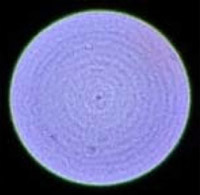A couple of responders mentioned nisen bokeh, a term I had not heard before. I've done just a little searching on this and it seems that this may indeed be what I am seeing in many of my telephoto shots.
I'll mangle this short summary, but it seems like this is caused by spherical aberrations in highly corrected lenses. Telephotos seem to be more subject to it. Today's highly corrected lenses use a number of different lens elements (aspherical elements, different refractive indices, etc) to correct various image distortions.
It happens with very thin objects (blades of grass, twigs, etc) just out of the DOF zone in front of and behind the plane of focus, but the depth of the area is greater behind the subject than in front.
The effect is a product of current lens designs, I guess. It can be present in a perfectly aligned lens but is exacerbated by a lens where the corrective elements are de-centered. We have very sharp and lightweight telephoto lenses today. But one of the trade-offs is more pronounced nisen bokeh.
The effect is not necessarily caused by VR/OIS. However, VR can exacerbate the problem. VR works by moving different elements around inside the lens. An intentional de-centering of elements, if you will. When lenses are moved towards the extreme of their travel for VR correction the aberrations will be greatest. This would explain what someone here mentioned, that Nikon re-centers the image just before the photo taken. This would help minimize the effect.
Because the effect is exacerbated by the alignment of lens elements I would take that to mean that IBIS would play no role in nisen bokeh effects.
So as I said, I probably mangled that explanation and made some misstatements. But I think I have a general idea of what is going on.
In a few bullet points...
- It seems the effect I'm seeing is likely nisen bokeh
- Nisen bokeh is has become more prevalent in telephoto lenses due to the highly corrective nature of current telephoto lens designs (aspherical elements, etc.)
- The effect is not directly caused by VR/OIS, but can be exacerbated by it as lens elements are moved further out of alignment to keep the subject sharp (remove vibration).







